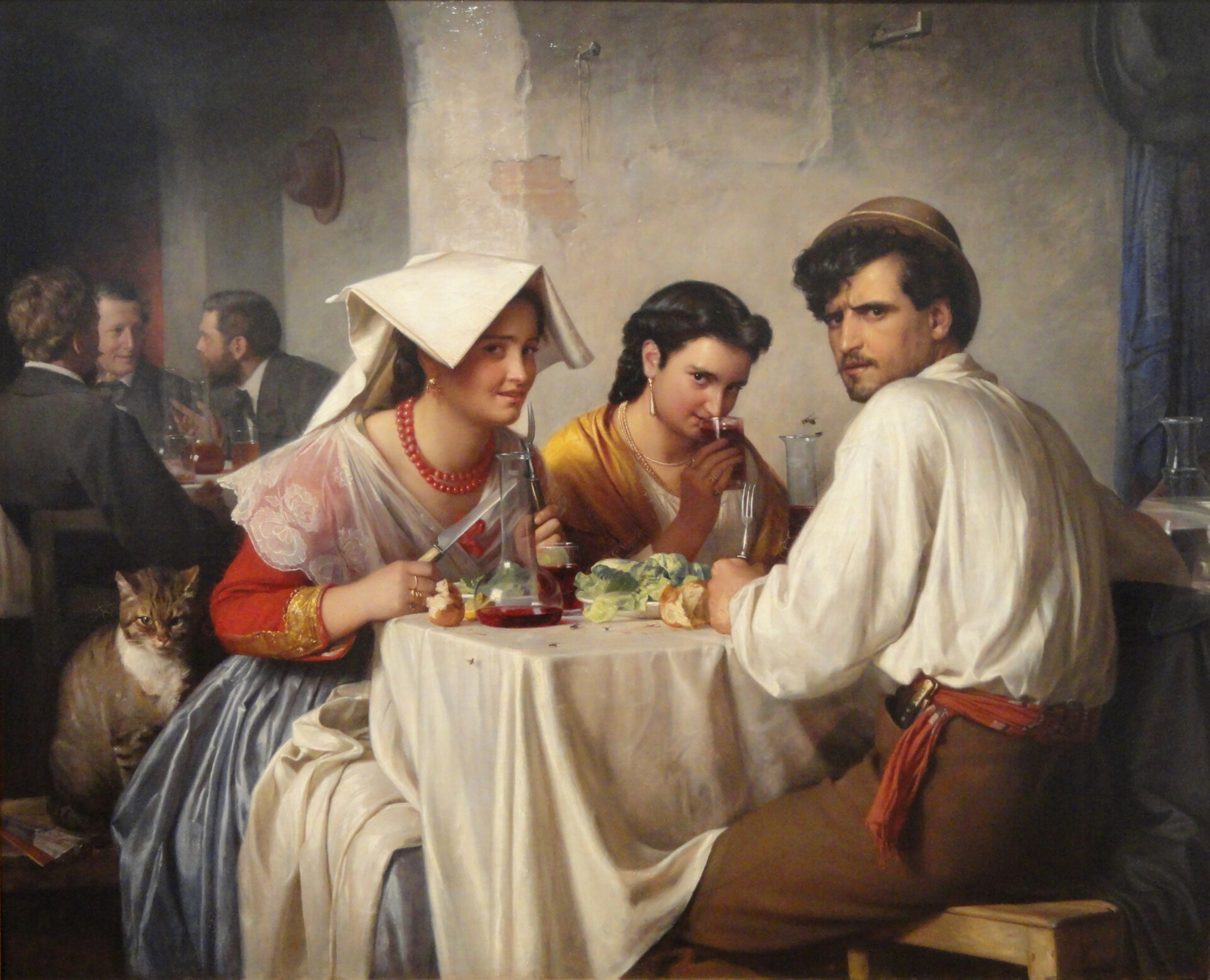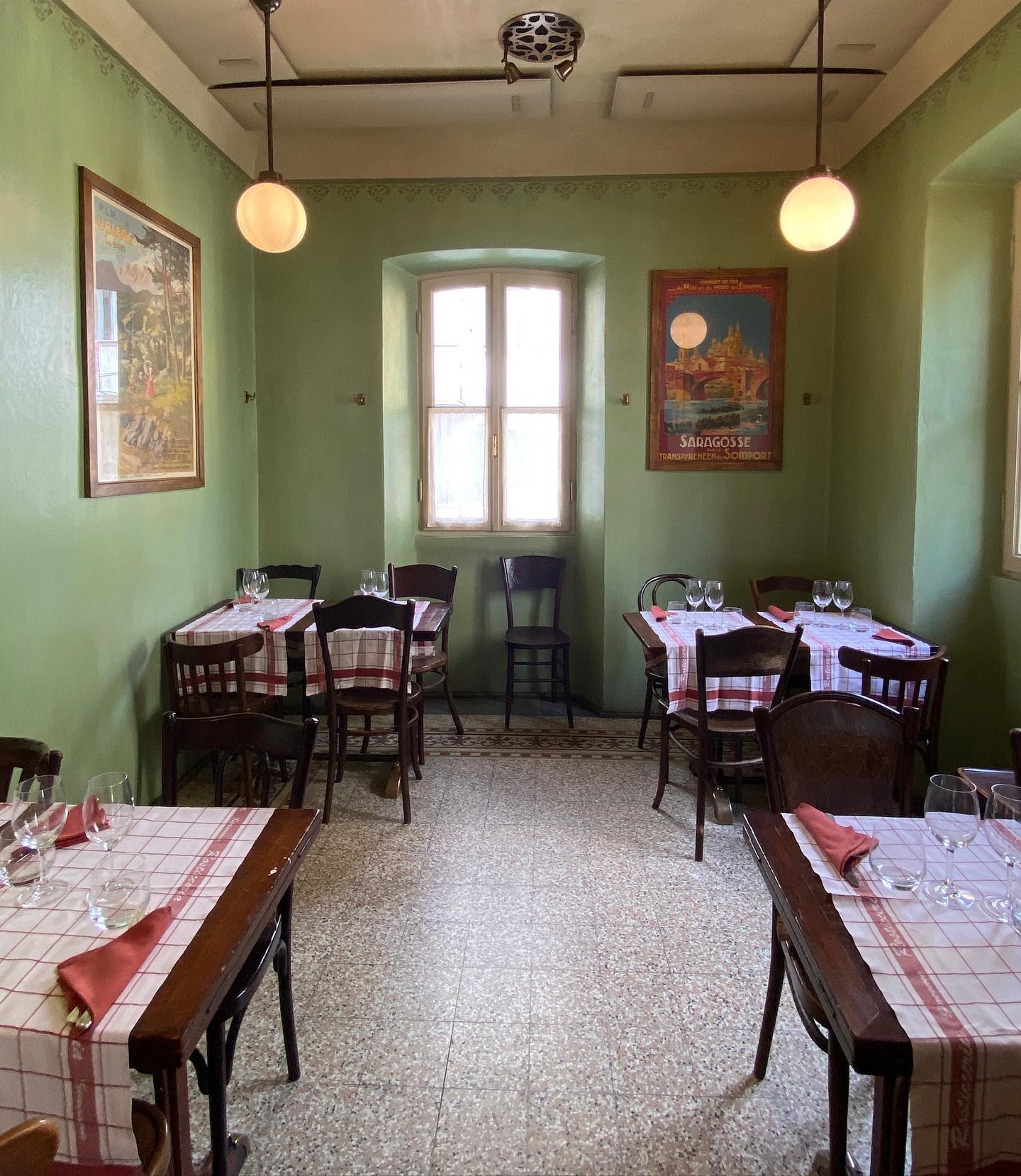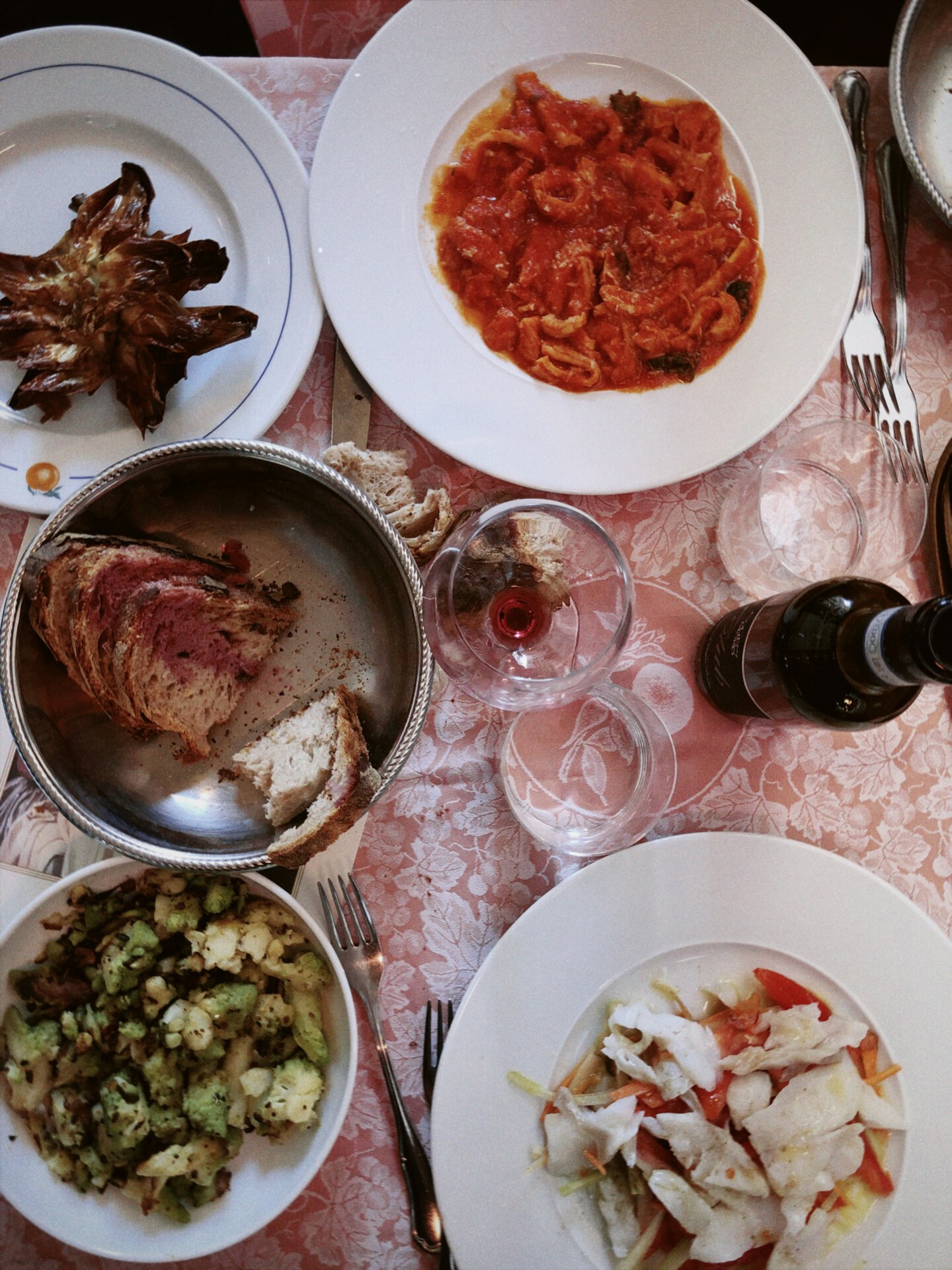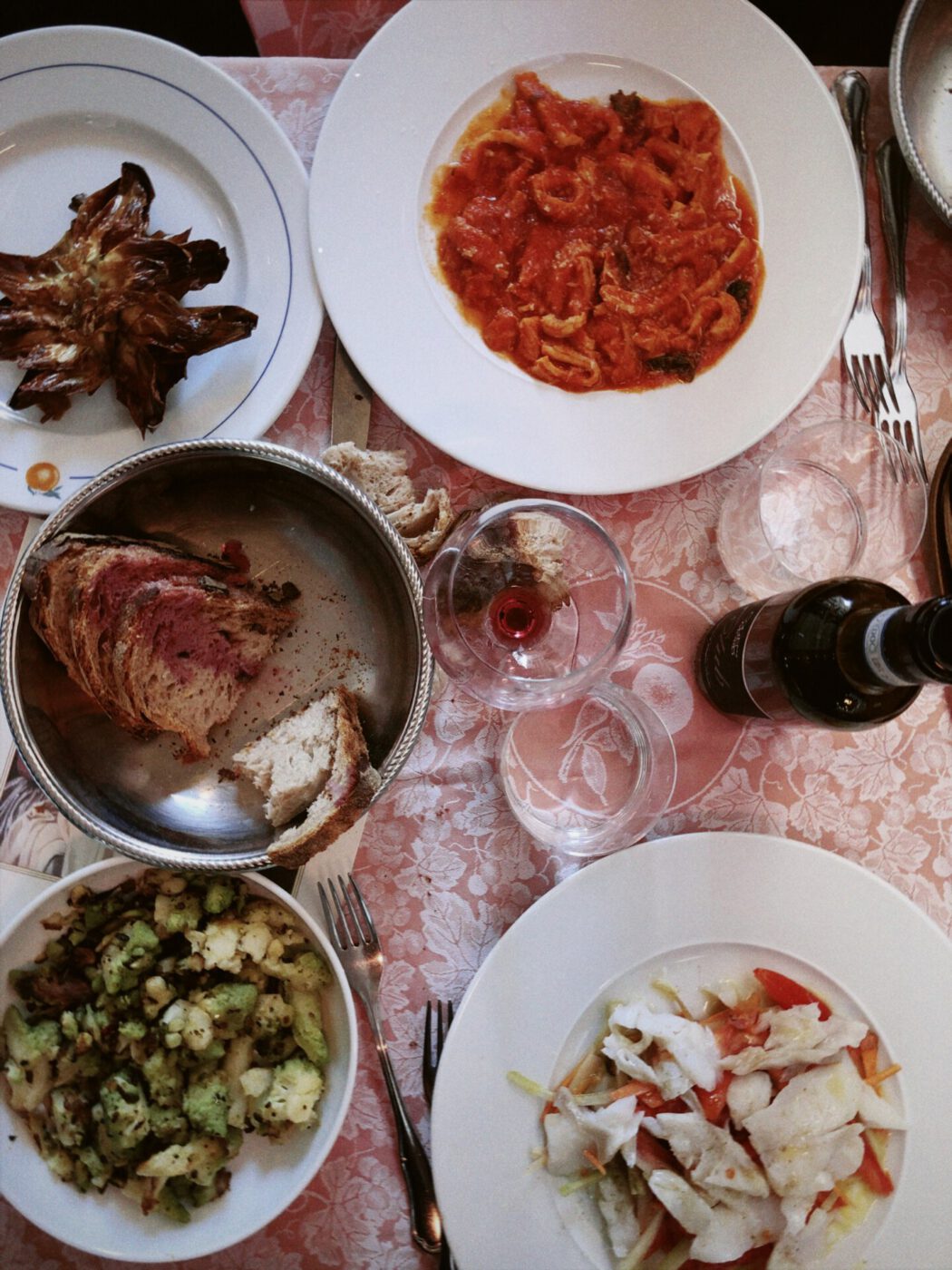In the beginning, in Italy, there was the osteria. And you had to bring your own food.
Relatively recent are the osterias we know and love today—those places where, whether for a solo lunch or for dinner with friends, tables are laid full of food and wine. Places where, in Tuscany for example, you might find hefty cuts of bistecca alla fiorentina and long strands of pappardelle coated in wild boar ragù. Or, in Puglia, orecchiette with biting cime di rapa and pesce al forno, caught just that morning by the local fisherman.
Three thousand years ago, the mere idea that you could be served food outside of the home, and of this level of culinary expertise and abundance, was unimaginable. The primary function of the osteria—which first appeared between the 7th and 8th centuries and was today what we would consider more of an inn—was rather room and board for travelers. They were spots where the main focus was wine, the scent of which rose from the wood of the tables, and a few cold dishes as accompaniment—hard-boiled eggs, cod fritters, or slivers of Parmigiano. To order a bottle, all you had to do was shout “WINE!” loud enough to be heard above the din.
If, and only if, the tavern had a kitchen, then simple dishes could also be found, reheated there and then. Usually, it was the guests themselves—at this point, exclusively travelers or workers—who were expected to bring alimentation with them in a cartoccio or gavetta (workers’ lunch boxes). This is still the case, for example, at one of the oldest taverns in Europe: the Osteria del Sole in Bologna’s Vicolo Ranocchi. Since 1465, in the city’s historic center, a sign simply promises “vino”. (If you go, don’t miss the little garden, where you can still see the rings used for tying up horses.) Bologna, as today, was a capital of food in Italy: by the 14th century, there were already more than 150 osterias in the red-bricked city.
Over the years, some osterias—especially those close to mines, gravel pits, or construction sites—began to serve “cooked” dishes and to bear the sign “Osteria con Cucina”. Tables were wooden and tableclothless, and for some bizarre reason, fruit was absolutely banned. The atmosphere was distinctly popular: a place for joking, amusement, and the occasional wedding feast or festival blowout.

This concept spawned the trattoria—a more structured tavern, this time always equipped with a kitchen. Here, full regional meals were served, prepared using unwritten recipes passed down through generations, mostly from mothers and grandmothers, each with their own way of cooking. Though these places were largely frequented by men, they were often run by families, with women balancing kitchen duties with childcare and garden work. It was in these kitchens that you’d find fresh pasta rolled with wooden pins, brodo made from backyard chickens, and fried foods crisped in two fingers of oil in heavy old pans.
Still, it wasn’t enough—because the rising middle class wanted to set the tone. Until the late 18th century, Italy’s elite avoided public spaces, dining at home with private staff. But as the bourgeoisie grew, cafés evolved into restaurants: spaces for social climbing, cultural signaling, and the pleasure of being both guest and spectacle.
“Ristorante” derives from the French homonym “restaurant” and the Latin of “to refresh”. The first place that bore this name was born in Paris in the late 1700s and served exclusively “the food that refreshes”: soup. Thanks to its proximity to France, Piedmont was the first Italian region with “proper” ristoranti. (The first restaurant in Italy may be Turin’s Il Cambio—a venue born in 1765 that evolved from a café where prominent members of society met to discuss big ideas.)
Equipped with menus, a kitchen brigade, and well-separated tables, these new restaurants were a far cry from the osterias: bare, noisy, and communal-tabled, not to mention menuless and seasonal (how terribly rustic!). The formula included the services of the old osterias and trattorias, but with some extra care for the bourgeois class who felt safe with standardized menus, mostly fixed à la carte, served at tables set by professional waiters. Unlike the regional offerings of the trattorias, dishes included more “exotic” indulgences and innovative recipes. Italians went to the ristorante, therefore, to taste and then gossip about special dishes, not the typical homemade ones, and to eat fruit, but not in season (how luxurious!), and to drink whole bottles of wine, saying goodbye to the bulk variety.
But what remains of these distinctions today besides an etymological evolution? Not much. In Italy today, the lines have beautifully blurred. You’ll find ristoranti with paper napkins and osterias with tasting menus and Michelin stars (see: Osteria Francescana). For all the names and forms—osteria, trattoria, ristorante—it all boils down to something simpler: a place where you feel taken care of. In Italy, that might mean a waiter who grumbles but remembers your wine, or a plate of pasta that tastes exactly like Sunday traditions. Whether you’re seated at a starched table or one stained with decades of Chianti, does it really matter what the sign says above the door?











